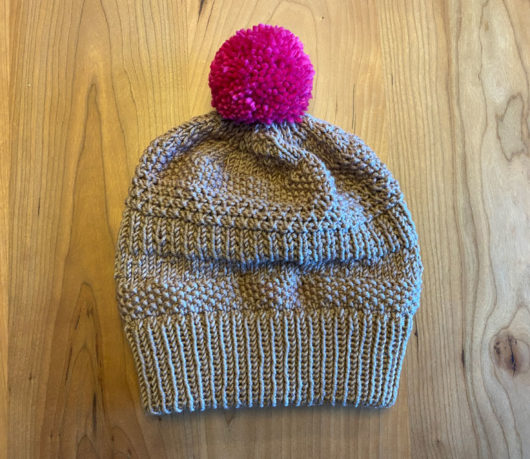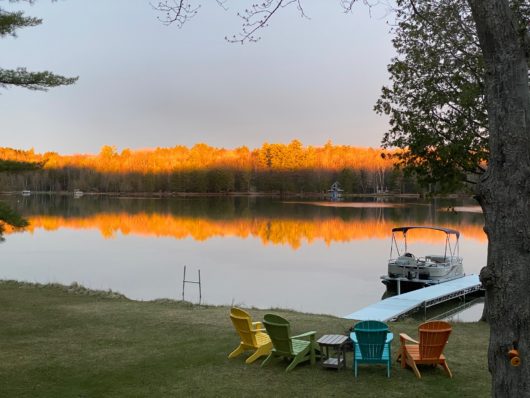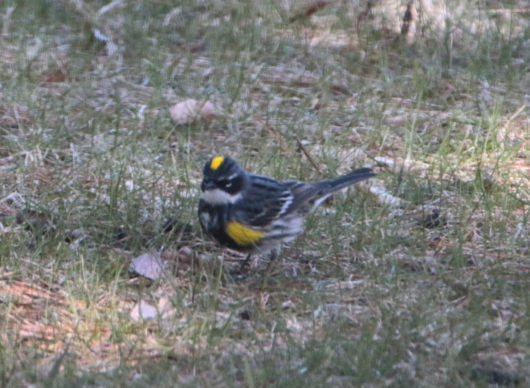This is Katie’s Kep, a traditional fair isle cap knit in nontraditional colors. It’s a freebie designed by Wilma Malcomson and is available on Ravelry, courtesy of Shetland Wool Week. If I’d have knit it in a yarn like Jamieson Spindrift the patterning would have been more crisp and defined. But I am still stashdiving and what I had on hand was Kate Davies Design’s Milarrochy Tweed. It’s a 70% wool, 30% mohair fingering weight with, as its name indicates, a tweed in it. All the colors have flecks of other colors and there’s also some thick and thin going on. I don’t see it as a good choice for fair isle. Blasphemy. Please don’t tell the fangirls.
Still, I think that the hat’s a stunner. And the crown is the star. Literally.
Some of my knit-buds quietly think me a bit goofy for some of my knitting habits. Most of these hats were knit while it was still quite cool. But it can be 90 degrees out and I’ll still be knitting wintry hats.
This next one is another freebie: Kate Gagnon Osborne’s February Hat.
This hat’s very stretchy bottom ribbing is created by starting with a provisional cast-on followed by K1, P1 ribbing. Once the ribbing is complete, the provisional cast-on is released and placed on a spare circular needle and then the stitches on both needles are knit together. The result is a folded brim. The other result is a rather deep pinched-in round as the ribbing transitions to the body of the hat. But that’s a fairly nice design feature.
I knit the hat and assembled the pompom from Plymouth Yarn’s Worsted Merino Superwash.
Next up is Aki, a freebie designed by Svetlana Volkova. The pattern calls for an Aran weight and I decided to use Dream in Color Classy. Classy calls itself a worsted. But it seems more Aran to me. My sense of this yarn is that it’s a bit stiff. I like it. A lot, actually. But in this interesting ribbed pattern the hat can almost stand up by itself. It will keep someone’s ears and head very warm. A good hat.
I modified the pattern by knitting the first set of ribs on needles two sizes smaller than for the body of the hat. I noticed a bit of a flare at the start in a number of projects and wanted to eliminate that. It worked quite nicely. I changed to a size US7 needle (from a 5) in the first set of all knit rounds. I also extended the first set of ribs by 2 rounds to keep the length of the ribs more uniform.
The crown decreases are abrupt. They take place entirely over 5 rounds. It’s a bit rustic, but it works. At least in a less stiff yarn it would work. Mine sports a top dimple that I don’t care for.
I next tackled another Dream in Color yarn that had been in my stash for years. This one is Calm, rather than Classy. It’s 100% merino, same as Classy, but has a softer hand. I knit Melissa LaBarre’s Winter Waves Slouch Hat. The pattern can be purchased on Ravelry. But it’s also included in “100 Knits: Interweave’s Ultimate Pattern Book, a hardcover published in July of 2018. It’s a wonderful book that I highly recommend.
I am such a sucker for lots of texture in a hat. The crown decreases keep the texture going.
I’ve decided that Winter Waves is mine. Speaking of waves, it’s 89 degrees here with very high humidity and the pontoon boat calls.

























